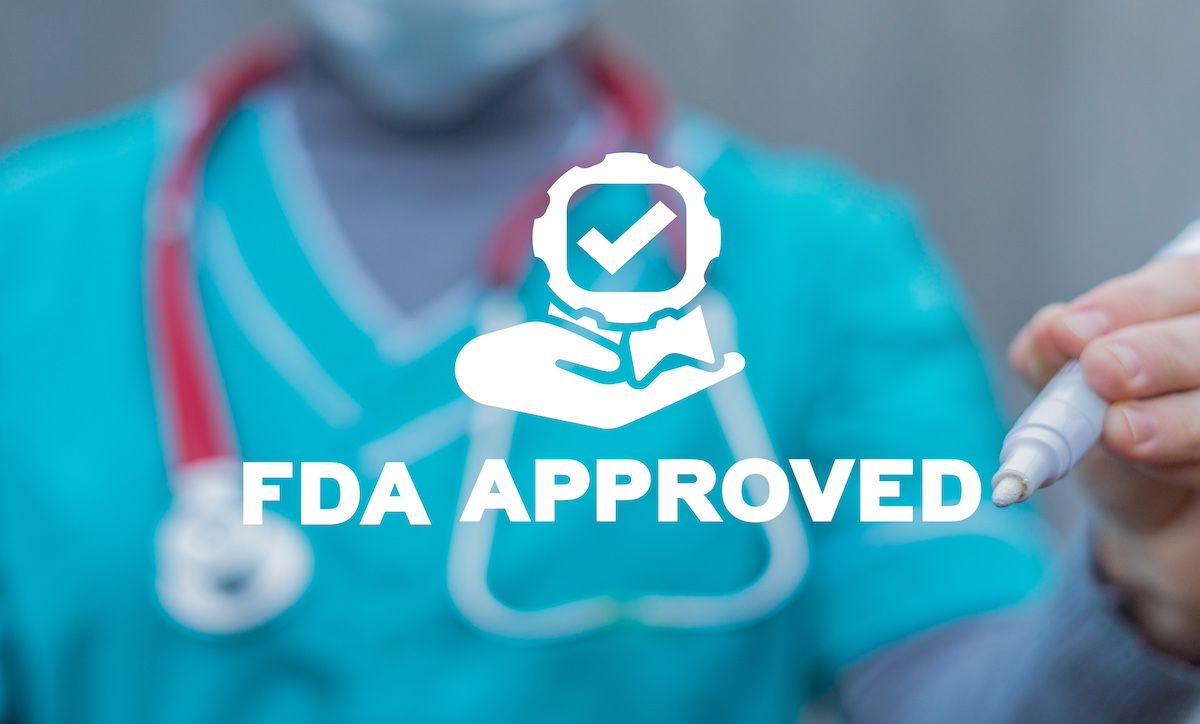- Center on Health Equity & Access
- Clinical
- Health Care Cost
- Health Care Delivery
- Insurance
- Policy
- Technology
- Value-Based Care
FDA Approves Arsa-Cel for Metachromatic Leukodystrophy
The approval makes atidarsagene autotemcel (arsa-cel [Lenmeldy]; Orchard Therapeutics) the first approved treatment for metachromatic leukodystrophy, a disease caused by a mutation in the ARSA gene and marked by progressive declines in both the central and peripheral nervous systems.
Atidarsagene autotemcel was approved by the FDA for metachromatic leukodystrophy, following priority review, orphan drug, rare pediatric disease, and regenerative medicine advanced therapy approvals | Image Credit: wladimir1804 - stock.adobe.com

The article has been updated.
Orchard Therapeutics’ gene therapy atidarsagene autotemcel (arsa-cel [Lenmeldy]) was approved Monday by the FDA to treat pediatric patients who have presymptomatic late infantile, presymptomatic early juvenile, or early symptomatic early juvenile metachromatic leukodystrophy (MLD), following priority review, orphan drug, rare pediatric disease, and regenerative medicine advanced therapy approvals.1 The full approval marks the first approved gene therapy for the inherited lysosomal storage disease.2,3
Characterized by progressive declines in both the central and peripheral nervous systems that primarily affect the white matter of the brain and lead to loss of both physical and intellectual functioning skills, MLD is a rare disease in which excessive sulfatide (fat) accumulation causes destruction of nerves’ myelin sheath, due to a mutation in the ARSA gene that leads to deficient production of the enzyme arylsulfatase A.1,4 It is noted to affect 1 in 40,000 persons in the US and 1 in 100,000 live births.1,5 Ages of onset are before 30 months (late infantile), between 30 months and 6 years (early juvenile), between 7 and 16 years (late juvenile), and adult (17 and older).6
The treatment is administered via a single infusion,5 following a conditioning regimen of high-dose chemotherapy, and it utilizes a patient’s genetically modified hematopoietic (blood) stem cells that now include functional copies of the ARSA gene introduced via a lentiviral vector and engraft within bone marrow to halt MLD progression.1,5
Data from 2 trials and an expanded access program support arsa-cel’s safety and effectiveness, with a primary end point of severe motor impairment-free survival, defined for the analysis as “interval from birth to the first occurrence of loss of locomotion and loss of sitting without support or death.” Overall, outcomes were compared between 37 children who received arsa-cel and an untreated cohort over a follow-up of more than 12 years and a median follow-up of 6.76 years.1
There was a significant reduction in the risk of death and severe motor impairment following administration of arsa-cel compared with untreated children. Among the children with presymptomatic late infantile disease, 100% remained alive at age 6 years vs 58% of the untreated children. In addition, 71% of the treated children retained the ability to walk at age 5 years, 85% of the children maintained standard language and performance IQ scores, and motor and/or cognitive disease demonstrated signs of slowed progression among the children with presymptomatic early juvenile and early symptomatic early juvenile disease.1
With typical adverse effects of febrile neutropenia, low white blood cell count, mouth sores, respiratory infections, rash, medical line infections, viral infections, fever, gastrointestinal infections, and enlarged liver, care teams need to monitor neutrophil counts and risk of delayed platelet engraftment until engraftment takes place in patients who receive arsa-cel. Blood clots and encephalitis have also been reported, and despite no cases being reported as of yet, there is a potential risk of blood cancer, spurring experts to recommend lifelong monitoring for hematologic malignancies.
“This is the first FDA-approved treatment option for children who have this rare genetic disease,” Peter Marks, MD, PhD, director of the FDA’s Center for Biologics Evaluation and Research, said in a statement. “We remain committed to advancing scientific and regulatory principles that enable the efficient development and review of safe, effective and innovative products that have the potential to change patients’ lives.”
Arsa-cel is also approved in Europe, where it is sold under the name Libmeldy.6
The wholesale acquisition cost for the 1-time administration of arsa-cel will be $4.25 million, making it the most expensive gene therapy, topping exagamglogene autotemcel (Casgevy; Vertex Pharmaceuticlas/CRISPR Therapeutics) at $2.2 million and lovotibeglogene autotemcel (Lyfgenia; bluebird bio) at $3.1 million, both of which treat sickle cell disease, and delandistrogene moxeparvovec-rokl (Elevidys; Sarepta Therapeutics) at $3.2 million, for use in Duchenne muscular dystrophy. Orchard's reasoning for the hefty price focuses on the treatment's potential to produce therapeutic benefit and its long-term impact on health care utilization and patient quality of life. The announcement of the price follows a comprehensive health technology assessment from the Institute for Clinical and Economic Review, which set arsa-cel's health benefit price benchmark at $3.94 million.7
References
- FDA approved first gene therapy for children with metachromatic leukodystrophy. FDA. News release. March 18, 2024. Accessed March 19, 2024. https://www.fda.gov/news-events/press-announcements/fda-approves-first-gene-therapy-children-metachromatic-leukodystrophy
- Metachromatic leukodystrophy late infantile form. Great Ormond Street Hospital for Children. Updated July 2016. Accessed March 19, 2024. https://www.gosh.nhs.uk/conditions-and-treatments/conditions-we-treat/metachromatic-leukodystrophy-late-infantile-form/#:~:text=Metachromatic%20leukodystrophy%20(MLD)%20is%20a,and%2C%20later%2C%20mental%20skills
- Lamichhane A, Cabrero FR. Metachromatic leukodystrophy. StatPearls. StatPearls Publishing; 2024. https://www.ncbi.nlm.nih.gov/books/NBK560744/#:~:text=Metachromatic%20leukodystrophy%20is%20a%20lysosomal,arylsulfatase%20A%20(ARSA%20gene)
- Metachromatic leukodystrophy. NORD. Updated March 18, 2024. Accessed March 19, 2024. https://rarediseases.org/rare-diseases/metachromatic-leukodystrophy/
- Orchard Therapeutics receives FDA approval of Lenmeldy (atidarsagene autotemcel). News release. BioSpace. March 18, 2024. Accessed March 19, 2024. https://www.biospace.com/article/releases/orchard-therapeutics-receives-fda-approval-of-lenmeldy-atidarsagene-autotemcel-the-only-therapy-for-eligible-children-with-early-onset-metachromatic-leukodystrophy-in-the-u-s-/
- Pediatric neuron disease gets its first gene therapy. MedPage Today. March 18, 2024. Accessed March 19, 2024. https://www.medpagetoday.com/neurology/generalneurology/109233
- Manalac T. Orchard Sets $4.25M US price for gene therapy Lenmeldy on heels of approval. BioSpace. March 20, 2024. Accessed March 20, 2024. https://www.biospace.com/article/orchard-sets-4-25m-us-price-for-gene-therapy-lenmeldy-on-heels-of-approval/
